Whitt Transfer and Storage has all your Packing needs
and smart tips to make it a good move
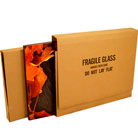
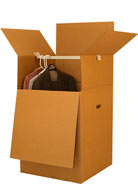
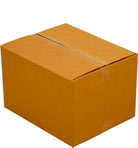
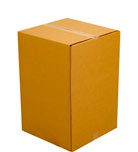
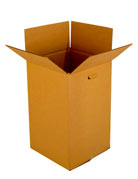
TIPS FOR PACKING: PREPARATION
First, we recommend you start with professional materials, including:
- Tissue pape
- Packing paper (plain newsprint)
- 2” packing tape
- Scissors
- Permanent markers
- Professional quality boxes
- Heavy duty plastic containers are OK
TIPS FOR PACKING: THE RIGHT STUFF
Mayflower has a wide range of boxes and professional packing materials available for purchase to help your organize and safeguard your belongings, including:
- Dishpack: Heavy duty carton used for dishes/china,
crystal and all glass
- Double-wall cartons: Extra protective cartons made especially for
items that do not fit into a
- Dish pack and other high-value, hard
to replace items.
- 1.5 cu. ft. cartons: Small carton for heavy items such as books, files tools, papers, can good desk items, music CDs and DVDs/video tapes
- 3.0 cu. ft. cartons: Medium utility carton often used for pots and pans, toys, and small appliances
- 4.5 cu. ft. cartons: For bulky items, such as linens, towels or
toys
- 6.1 cu. ft. carton: For large bulky,
or lightweight article, such as pillows or large lampshades
- Wardrobe cartons: A “portable closet”
that keeps clothes or draperies hanging on a built-in bar
- Mirror Cartons: Several sizes of
telescoping cartons for framed pictures, mirrors, or glass
- Mattress cartons: Available in
queen/king, double, single (twin) and crib sizes. A separate
- Carton is necessary for box springs
- Stretchwrap: A special plastic
covering that safely adheres to furniture and protects it from
- Snags, tears, and dirt
- Same rules applies with Plastic
Containers
- Check with your Mayflower agent on materials
available for purchase
- Use newspaper only for
cushioning-never place newspaper against items as the ink will rub off. It can get embedded in fine china, so be
wary!
TIPS FOR PACKING: BASIC TRAINING
If you decide to do the packing yourself, you will need to have everything properly packed and ready for loading when the moving van arrives. All packing should be completed the evening before moving day. Only essential personal items you’ll need that night, the next morning and immediately at your destination should be left for last minute packing.
- Some basic packing tips to keep in
mind
- Follow a timetable-people often
underestimate how long it takes to pack!
- Start with items you won’t need right away, such as belongings stored in the basement, garage, or attic
- Packing room-by-room will help you
stay organized
- Establish work areas in each room
- As you complete a room, sort packed boxes by weight (light, medium, heavy) to make
- Loading the moving van easier and quicker
- Limit cartons to a maximum weight of 50 pounds
- For best results, have your mover pack:
- Marble or glass tabletops, heavy wall ornaments and mirrors 18” x 28” or larger
- Pool tables and pianos
- Bulky, fragile items like large trophies, statues, chandeliers, etc.
- Major appliances
TIPS FOR PACKING: TECHNIQUES
Our Mayflower professionals will check your packed boxes to ensure safe transportation. If it is their opinion that items are improperly packed or cartons are susceptible to damage, they may ask you to re-pack these items.
- Provide plenty of cushioning by
packing loosely crumpled, pain newsprint in the bottom of
- boxes –leave room at the top for more
crumpled paper
- Wrap all fragile, breakable items in
paper before packing them in boxes
- Pack large and heavy items first, smaller items next, filling in all empty spaces with plain newsprint
- Use only sturdy cartons that can be easily closed (don’t over stuff, round) do not under pack a carton the carton need to be firm (finish with wads of paper if needed) Only exception
- Lamp shades, which are packed by
themselves., then tape top seams securely.
- Label boxes clearly. Your name, room where the box should go in
your new home and a
- Brief description of the contents on
the side of the carton.
- Same rules apply for plastic containers
TIPS FOR PACKING: ELECTRONICS CARE
- When packing a large screen TV and
other electronics:
- Bag or Shrink wrap the plasma, LCD,
LED before boxing
- If you no longer have the original carton and packing materials, carefully pack the item in a double or triple wall carton that has been lines with newsprint or Styrofoam “peanuts”
- Securely seal the carton and mark the
outside “Extremely Fragile”
- When packing your personal computer,
printer, scanner, or other equipment:
- Disconnect and mark all wires and
cables for easy assembly
- Detach paper holders/feeders from printers and wrap monitors and additional hardware as you would other home electronics
- Remove toner and ink cartridges
- Back up all of your computer files on
DVDs or other file storage disks/devices
- Consult your PC user manual for
additional instructions and precautions
TIPS FOR PACKING: WHAT NOT TO PACK
You need to transport valuable and irreplaceable items in the car with you rather than on the truck. In addition, there are several other dangerous items that cannot be put on the truck. These include hazardous materials such as explosives, compressed gases, flammable liquids and solids, oxidizers, poisons, corrosives, and radioactive materials
Common examples include:
- Nail polish remover
- Paint and paint thinner
- Lighter fluid
- Gasoline Fireworks
- Oxygen bottles
- Propane cylinders
- Automotive repair and maintenance chemicals
- Radio-pharmaceutical
- Matches
- Other items not recommended for transport on the van include:
- Ammunition, gunpowder, primers
- Family photos
- Food in glass jars and perishable foods
- Prescription drugs needed for immediate use
TIPS FOR PACKING: LABELING HINTS
Each and every carton must be labeled:
- Use a broad, felt tipped marker.
- Clearly mark room and contents.
- Indicate “FRAGILE” on delicates; “THIS
END UP” where appropriate.
- If available, include your bill of
lading number on every box.
- As you finish with each carton, list
the contents on the side of the carton (for easy viewingwhile stacked) and in a
special notebook. You might want to
number and/or code the cartons as well.
- Indicate your name and the room to
which each carton should be delivered at destination.
- Tape a sign on the door of each room
at destination corresponding to the carton labels movers can get the cartons into the
proper rooms quickly.
- Put a special mark (the number 1, or
the letter A) on cartons you want to unpack first at
- Destination
TIPS FOR PACKING: TIPS FROM THE PROS
- Start with out-of season items. Next, pack things used infrequently. Leave until the last minute things you’ll need until moving day.
- Empty drawers of breakables, spillables, non-transportable items and anything that would puncture or damage other items.
- Pack similar items together. Do not pack a delicate china figurine in the same carton with cast-iron frying pans, for example.
- Keep all parts or pairs of thing together. For example, curtain rod hangers, mirror bolts and other small hardware items should be placed in plastic bags and taped or tied securely to the article to which they belong.
- Wind electrical cords, fastening them
so they do no dangle.
- Wrap items individually in clean paper, use tissue paper, paper towels or even facial tissue for fine china, crystal, and delicate items. Colored wrapping paper draws attention to very small things that might otherwise get lost in a carton. Use a double layer of newsprint for a good outer wrapping.
- Place a two or three inch layer of
crushed paper in the bottom of cartons for cushioning.
- Build up the layers, with the heaviest thing on the bottom, medium weight next, and lightest on top.
- As each layer is completed, fill in
empty spaces firmly with crushed paper and add more
- Crushed paper to make a level base for the next layer, or use sheets of cardboard cut from cartons as dividers.
- Cushion well with crushed paper, towels, and lightweight blankets may also be used for
- Padding and cushioning. The more fragile the item, the more cushioning needed. Be sure no sharp points, edges, or rims are left uncovered.
- Pack small, fragile, individually-wrapped items separately or a few together in small boxes cushioning with crushed or shredded paper. Place small bodes in a single large box, filling in spaces with crushed paper.
- Avoid overloading cartons, but strive for a firm pack that will prevent items from shifting;
- The cover should close easily without force, but should not bend inward.
- Seal cartons tightly with tape except for those containing items that must be left open forthe van operator’s inspection

